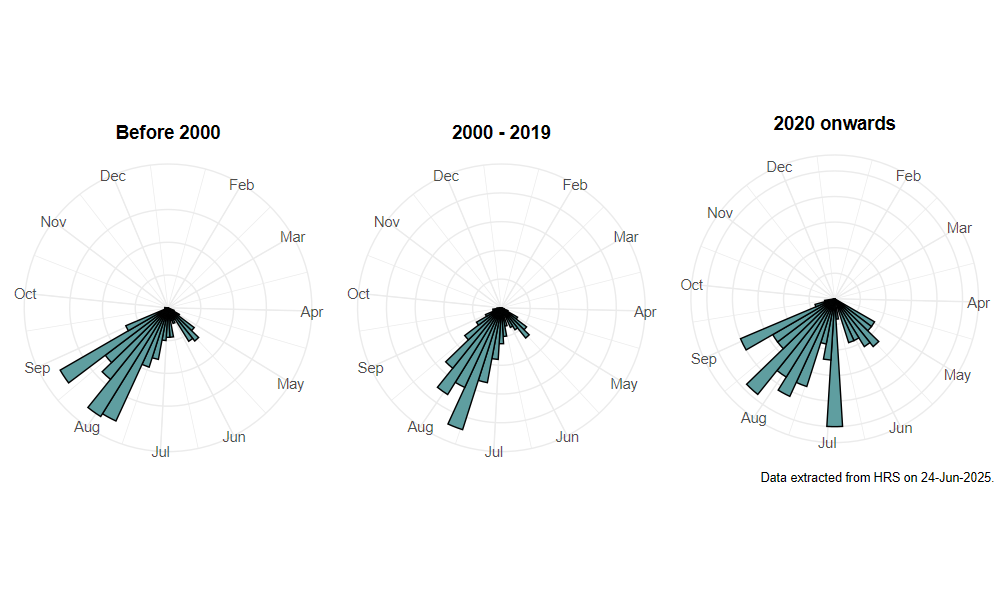Sphaerophoria taeniata (Meigen, 1822)
Identification
Identification difficulty = 3. ![]()
![]() according to Ball & Morris, 20241
according to Ball & Morris, 20241
Biology
Larva unknown, but it has been reared from a puparium found on a Common Reed Phragmites australis stem. It is generally found in rich, unimproved, damp grassland, often with rushes Juncus sp, but also in open areas in damp woodland and scrub. Adults fly low amongst the vegetation and visit flowers such as buttercups Ranunculus sp. and yellow composites.
Flight period
The following plots show the number of unique records per week excluding those reported to be of immature stages.

Distribution
A rather scarce and local species of southern Britain, with a few records in the Welsh borders and the fens of Anglesey. Its distribution is notably disjunct with several records from northern Scotland, including a record from north of Inverness.

Trends
The following plots show the Frescalo TFactor vs year and a map of the rescaled frequency (all records) for the species.
-
Ball, S., & Morris, R. (2024). Hoverflies of Britain and Ireland. WILDGuides (3rd ed.). Oxford: Princeton University Press. ↩